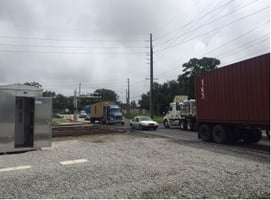Railroad Axle Counting Systems | Why Rail Axle Counting Works
Traditional railroad signaling methods rely on a “track circuit” in which the rail itself provides an electrical circuit. Developed during the later half of the 19th Century, the track circuit has served the industry well for over a century. However, it has many disadvantages including:
- Susceptibility to poor ballast conditions and storm water intrusion between the rails.
- Poor performance when rust forms atop rails due to infrequent train movements
- False activations when snow-melting chemicals infiltrate highway grade crossings.
- Activation failures where industrial contaminants accumulate atop rails.
- Reliability issues caused by broken bonds, degraded insulated joints, and damaged diodes or shunts.
- Reliability issues caused by broken bonds, degraded insulated joints, and damaged diodes or shunts.
Axle counting methods are the proven alternative to the traditional track circuit. Through the use of vital, fail-safe sensing technology, a virtual track circuit is created, which is resistant to environmental conditions. Axle counting technology provides an extremely high level of safety and reliability under all track conditions. Pintsch systems will even function when the track and structure are infiltrated by storm water and mud. Axle counting systems can be deployed in the most complex track layouts and can accommodate locations in which complex train movements and switching occur
If you are looking for a vital, proven alternative to traditional train detection and highway grade crossing methods, you will want to consider Pintsch axle counting technology. With over 25 years in the North American market, our systems and components can be found on all major class-one railroads.

An axle counting system provides the needed reliability where a steel‐deck bridge extends into the approach of a highway grade crossing system.

